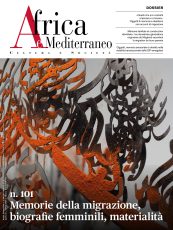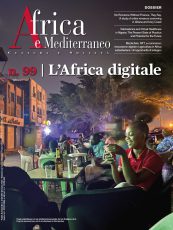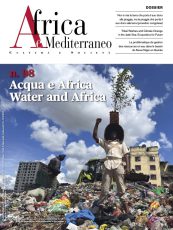Memories of migration, female biographies, materiality
Africa e Mediterraneo n. 101 (1/25)
Migration is the anthropological phenomenon that has had the most impact on recent history, with deep and widespread effects on institutions and the coexistence of peoples.
The 1990s myth of a globalized planet populated by individuals with “flexible citizenship” has been replaced by a toxic and “territorialized” vision of fortified nation-states, where mobility is increasingly framed as a privilege rather than a right. This perspective translates into an ideology of exclusion, backed by policies that not only physically repel migrants but also dispossess and suppress their voices. In the Italian context in particular, legal norms and administrative practices concerning residence are designed in such a way that the effective exercise of rights – first and foremost the right to citizenship – becomes a constant challenge.
On a bureaucratic and administrative level, the obstacles are innumerable. What could be simple is made time-consuming and ultimately unreachable. The economic needs of many migrant families – not only those linked with the cost of living in Italy, but also with supporting the families left in the countries of origin – are such that people are continuously forced to adapt to modest career expectations and diminished forms of self-expression.
Nevertheless, persons – and in some cases entire populations – keep moving, experimenting with new forms of mobility that are reshaping History, making migrants the main protagonists of the geopolitical upheavals of our time.
This issue of Africa e Mediterraneo explores what exists and resists in the gap between the stories – expropriated, violated, and silenced biographies – of these individuals and the History that engulfs and overwrites them. We focus especially on the role of “objects of memory” in these difficult experiences and their narratives: personal belongings that evoke deliberate or involuntary memories of the homeland, domestic culture, family and social relationships, and of life before migration.
These objects move with the persons – sometimes even more than the persons themselves – they create emotional landscapes and networks of relationships, safeguarding inner worlds, reproducing evolving identities, and negotiating belonging in conditions of disorientation and displacement. This material universe and its cultural practices offer a vantage point on the processes of deterritorialization and reterritorialization in our world, helping us better understand a scenario in which societies seem to, simultaneously, “liquefy” and harden around perceived identity “differences” that are seen as increasingly exclusive and irreconcilable.
Objects preserve genealogy and make the experience of migration and the awareness of diaspora tangible. They become symbols and catalysts of cultural meanings, identity memory, and history – but also of expectations for the future. Objects project identity into the past, the present, and the future, simultaneously looking in multiple directions, articulating returns and new beginnings, and enabling the transmission of cultural belonging to future generations.
In short, they are directly involved in shaping what scholar AbdouMaliq Simone calls “worlding from below” (2001) – existential horizons where different places and temporalities coexist alongside habits, social conventions, and power relations.
Also helpful is the concept of “migrant worlds” developed by Paul Basu and Simon Coleman in their study focused on the materiality of migration (2008: 313). For these authors, migration is a phenomenon grounded in the movement of both material and immaterial “resources” from one place to another – resources that are transformed in the process of travel. A key feature of this phenomenon is the relationship between these resources, a relationship that creates an organic existential universe in which people and objects mutually shape each other.
Thus, the material perspective on migration becomes attentive to the “ecological” dimension of the transit experience and to the ways in which the tangible and the intangible interact not only with each other but also with the spaces they cross – and inevitably transform.
The articles included in this issue present thought-provoking critical reflections on the worlds formed in the relationships between people and objects of memory from multiple disciplinary perspectives: literature, sociology, anthropology, autobiography, and autoethnography. From photographs to objects used in welcoming ceremonies, to food, to raw clay ready to be shaped – objects link the public and private dimensions, giving form to new expressions of care and belonging.
Cover: Monia Ben Hamouda, “Aniconism as Figurative Urgency (Hamra)”, 2022. Installation view of “Hamra”, Ariel Feminisms in the Aesthetics, Copenhagen, 2022. Laser cut steel, spice powders 200x150x25 cm. Courtesy of Monia Ben Hamouda, Milan and ChertLüdde, Berlin.
Africa e Mediterraneo n. 101 (1/25); Lingua: Contiene articoli in italiano inglese e francese; Codice ISSN: 1121-8495; Formato: 88 pp., 21×28 cm, brossura filo refe.








